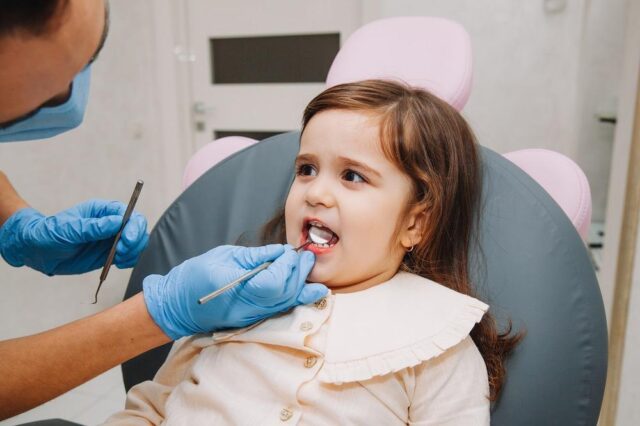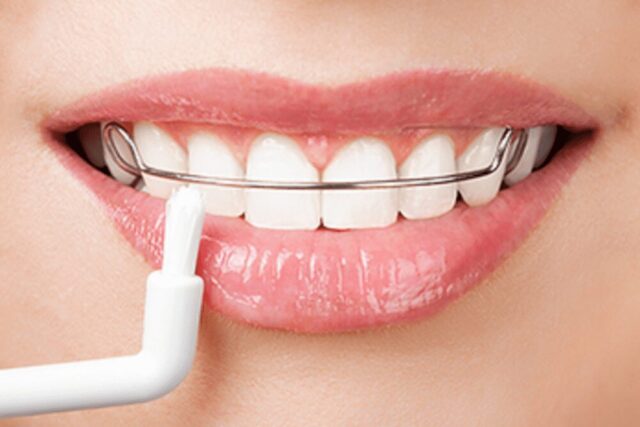
Your child’s first orthodontic appointment may seem daunting, but with proper preparation and understanding, it can be a smooth and positive experience. In this article, we will discuss the importance of orthodontic care for children, why early evaluation is crucial, how to prepare your child for the first visit, what happens during the appointment, techniques to alleviate anxiety, and post-appointment care and follow-up.
Why is Orthodontic Care for Children Important?

Orthodontic care plays a significant role in your child’s dental health. Proper alignment of the teeth and jaws not only improves their smile but also contributes to overall oral health. With straight teeth, your child can brush and floss effectively, reducing the risk of tooth decay, gum disease, and other dental problems.
But What Exactly Does Orthodontic Care Entail?
This branch of dentistry aids in correcting bites, alignment, and promoting healthier oral habits that contribute to long-term dental well-being. At Junior Smiles of Stafford, the process begins with a comprehensive examination by the adept pediatric dentist in Woodbridge, VA, to identify any orthodontic concerns that may require attention. The customized treatment plan may include the use of braces, retainers, or other dental appliances to help achieve a well-aligned, attractive smile.
Early Detection and Intervention
Early orthodontic evaluations pave the way for the identification of potential problems before they escalate into more severe issues. Conditions such as crowding, overbites, underbites, and crossbites can often be spotted and managed more effectively when caught in the early stages. The proactive nature of early intervention can significantly reduce the complexity and length of future treatments, if needed.
Guiding Jaw Growth
Children’s jaws are continuously growing, and orthodontic treatment can help steer this growth to accommodate emerging teeth properly. This proactive approach not only helps in ensuring that the jaw develops correctly, but it can also prevent more intricate orthodontic issues down the line. By guiding jaw growth early, orthodontists can help create a better foundation for incoming permanent teeth.
Facilitating Proper Tooth Eruption
Making sure there’s ample space for the incoming permanent teeth is a crucial aspect of early orthodontic care. Proper alignment from the outset can mitigate the need for tooth extractions or other invasive procedures later in life. Moreover, it helps in maintaining a better oral hygiene routine as properly aligned teeth are easier to clean and maintain.
Preventing Oral Health Issues
Misaligned teeth or jaw problems can lead to other oral health complications like cavities and gum disease. Early orthodontic treatment can thwart these complications, promoting better oral health and hygiene in the long run. Furthermore, a well-aligned smile can aid in preventing issues like tooth grinding and abnormal wear, which could become problematic later on.
Improving Self-Esteem and Social Comfort
A pleasing smile can substantially enhance a child’s self-esteem and social interaction. Addressing orthodontic issues early can contribute to their confidence, positively impacting their social and psychological development. Children who are confident about their smiles are likely to have a better social experience, which is vital for their emotional growth.
Reducing Treatment Time
Early intervention often trims down the total time a child needs to spend in orthodontic treatment later in life. By tackling issues early on, the treatment process may be less invasive and more straightforward, leading to a smoother orthodontic journey. This proactive approach is not only beneficial for the child but also for the parents, making the orthodontic process less cumbersome.
Cost Efficiency
Preventing or rectifying issues early on can also be more cost-effective in the long run. It could potentially save families time and resources by minimizing the need for more extensive treatments later on. Early orthodontic evaluations and interventions are investments in a child’s future oral health, laying the foundation for a lifetime of beautiful, healthy smiles.
Remember, orthodontic care is not just about aesthetics. It is about ensuring your child’s oral health and overall well-being. By investing in early orthodontic evaluation and treatment, you are setting your child up for a lifetime of healthy smiles.
How to Prepare Your Child for the First Orthodontic Visit

Preparing your child for their first orthodontic visit can help alleviate any fears or anxieties they may have. Here are some tips to help make the experience smoother:
Discussing the Visit with Your Child
Talk to your child about their upcoming orthodontic visit in a positive and reassuring manner. Explain that the orthodontist will examine their teeth and jaws to determine the best course of treatment. Address any concerns they may have and assure them that the appointment is necessary for their oral health.
Gathering Relevant Medical and Dental History
Prior to the appointment, gather any relevant medical and dental records, including any previous X-rays or dental examinations. This information will provide the orthodontist with valuable insights into your child’s dental history and aid in creating an effective treatment plan.
What Happens During the First Orthodontic Appointment?

Your child’s first orthodontic appointment typically consists of an initial examination and assessment, followed by a discussion of potential treatment plans:
Initial Examination and Assessment
The orthodontist will examine your child’s teeth, jaws, and facial structure to assess their dental health and identify any orthodontic issues. This may involve taking X-rays and photographs to further evaluate their condition. Based on this examination, the orthodontist will develop a personalized treatment plan tailored to your child’s needs.
Discussing Potential Treatment Plans
Once the examination is complete, the orthodontist will discuss the potential treatment options with you and your child. They will explain the recommended course of action, the estimated duration of treatment, and answer any questions you may have. This is an excellent opportunity to address any concerns or preferences regarding the treatment plan.
How to Deal with Your Child’s Anxiety and Fears

Visiting the orthodontist can be an anxious experience for some children. To help alleviate their fears and ensure a positive orthodontic experience, consider the following techniques:
Techniques to Alleviate Dental Anxiety in Children
Distraction techniques, such as bringing a favorite toy or book, can help divert your child’s attention during the appointment. Additionally, reassuring them and offering words of encouragement can provide a sense of comfort. Choosing an orthodontist with a child-friendly office environment and staff can also make a significant difference in their overall experience.
Ensuring a Positive Orthodontic Experience
Emphasize the long-term benefits of orthodontic treatment, such as a beautiful smile and improved oral health. Reassure your child that the orthodontist and their team are there to help them achieve these benefits. Encourage them to ask questions and express any concerns they may have, so they feel actively involved in their own dental care.
Post-Appointment Care and Follow-Up

After the first orthodontic appointment, it’s essential to follow any post-visit instructions provided by the orthodontist:
Understanding Post-Visit Instructions
The orthodontist will likely provide instructions on caring for your child’s braces, aligners, or any other orthodontic appliances. This may include dietary restrictions, brushing and flossing techniques, and other maintenance guidelines. Following these instructions diligently will contribute to the success of the treatment and prevent any potential complications.
Scheduling and Preparing for Follow-Up Visits
During the first appointment, the orthodontist will discuss the frequency of follow-up visits and ensure that you are well-informed about future appointments. By scheduling and preparing for these visits in advance, you can stay on track with your child’s orthodontic treatment and address any concerns or adjustments that may be necessary.
Conclusion
With the information and guidance provided in this article, you can now approach your child’s first orthodontic appointment with confidence. By understanding the importance of orthodontic care, preparing your child for the visit, managing anxiety, and following post-appointment care instructions, you are setting them on the path towards a healthy and beautiful smile.












